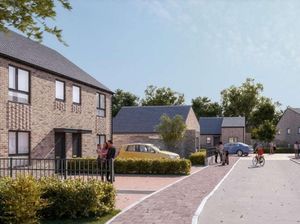Inter-war housing estates in Wolverhampton to get 24 new homes
Plans to build 24 new homes on a former adventure playground between two large inter-war housing estates in Wolverhampton have this week been given the go-ahead by council bosses.

The oval stretch of land at the rear of Old Fallings Crescent in Low Hill will be developed to create a mix of detached and semi-detached houses, bungalows and flats for rent. The site, which also borders Fallings Park, was previously occupied by Peach Tree adventure playground and a number of garages.
Two semi-detached council houses in the circular road – numbers 149 and 151 – will be demolished to make way for the new homes. The 0.95 hectare site, which will have two access points, is surrounded on all sides by a combination of terraces on corner turning plots and semi-detached dwellings.





